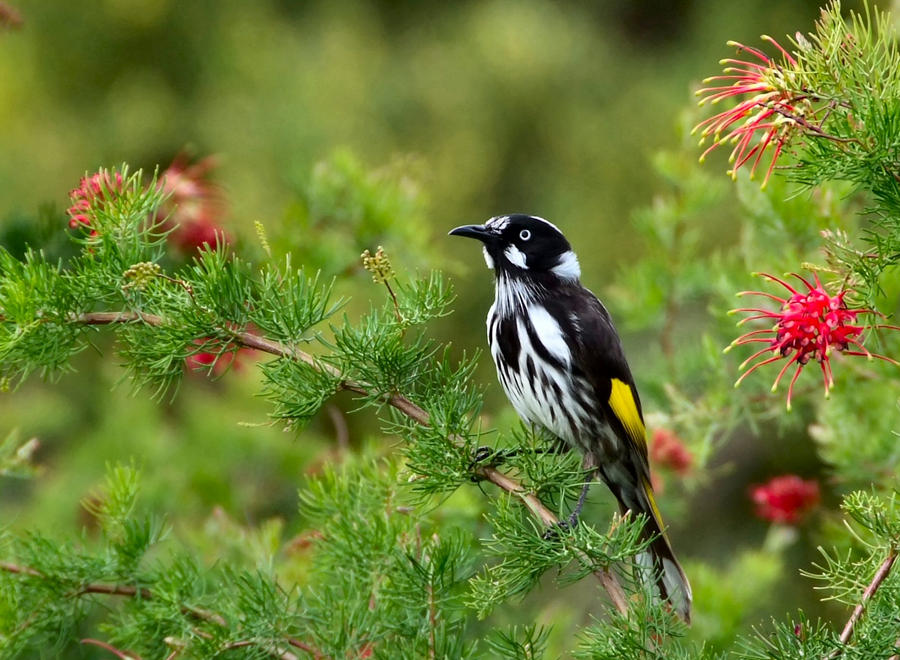New Holland Honeyeater Biography
The New Holland Honeyeater is common in heath, forests, woodland and gardens, mainly where grevilleas and banksias are found. It is inquisitive and approaches humans. It also mixes with other types of honeyeaters.







The New Holland Honeyeater is mostly black and white, with a large yellow wing patch and yellow sides on the tail. It has a small white ear patch, a thin white whisker at the base of the bill and a white eye. This honeyeater is an active bird, and rarely sits still long enough to give an extended view. Sexes are similar in looks, but females are slightly smaller in size. Young birds are browner and have a grey eye.
One very similar species is the White-cheeked Honeyeater,Phylidonyris nigra. This species has a single large white cheek patch and a dark eye. The two species frequently occur together.
The New Holland Honeyeater's range extends throughout southern Australia , from about Brisbane , Queensland , to just north of Perth , Western Australia
New Holland Honeyeaters are active feeders. They mostly eat the nectar of flowers, and busily dart from flower to flower in search of this high-energy food. Other food items include fruit, insects and spiders. Birds may feed alone, but normally gather in quite large groups. Most feeding takes place in lower areas of bushes and thickets.
The New Holland Honeyeater's cup-shaped nest is made of bark and grasses, bound together with spider web. It is lined with soft material and is placed in a bush or tree, anywhere from ground level up to 6 m. Both sexes feed the chicks. A pair of adults may raise two or three broods in a year.
New Holland Honeyeater

New Holland Honeyeater
New Holland Honeyeater

New Holland Honeyeater

New Holland Honeyeater

New Holland Honeyeater

New Holland Honeyeater

New Holland Honeyeater

New Holland Honeyeater
New Holland Honeyeater
New Holland Honey Eater

No comments:
Post a Comment